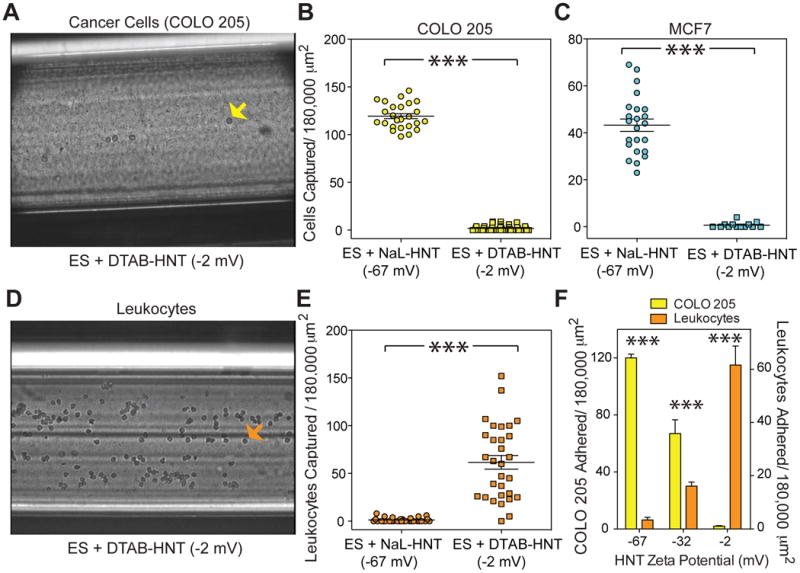Figure 4.

HNT treatment with cationic surfactant reverses tumor cell and leukocyte capture on nanostructured biomaterial surfaces. Cancer cell and leukocyte capture on nanostructured surfaces under flow is dependent on HNT charge. (A) Negating HNT charge using DTAB surfactant abolishes cancer cell capture under flow. Yellow arrows denote adhered COLO 205 cells. Scale bar = 200 μm. (B,C) Number of captured COLO 205 (B) and MCF7 (C) cells per 180,000 μm2. n = 20 or more image frames analyzed for each condition. Statistics calculated using a two-tailed unpaired t-test. ***P < 0.0001. (D) Negating HNT charge using DTAB surfactant restores leukocyte capture under flow. Orange arrows denote adhered leukocytes. Scale bar = 200 μm. (E) Number of captured leukocytes per 180,000 μm2. Calculated values are mean +/- SEM. n = 20 or more frames analyzed for captured cells for each condition. Statistics calculated using a two-tailed unpaired t-test. ***P < 0.0001. (F) Comparison of ES-mediated adhesion of leukocytes and COLO 205 cells per 180,000 μm2 as a function of HNT zeta potential. Error bars denote standard error of the mean. Statistics were calculated using a two-tailed unpaired t-test. n = 30 or more image frames analyzed. ***P < 0.0001.
